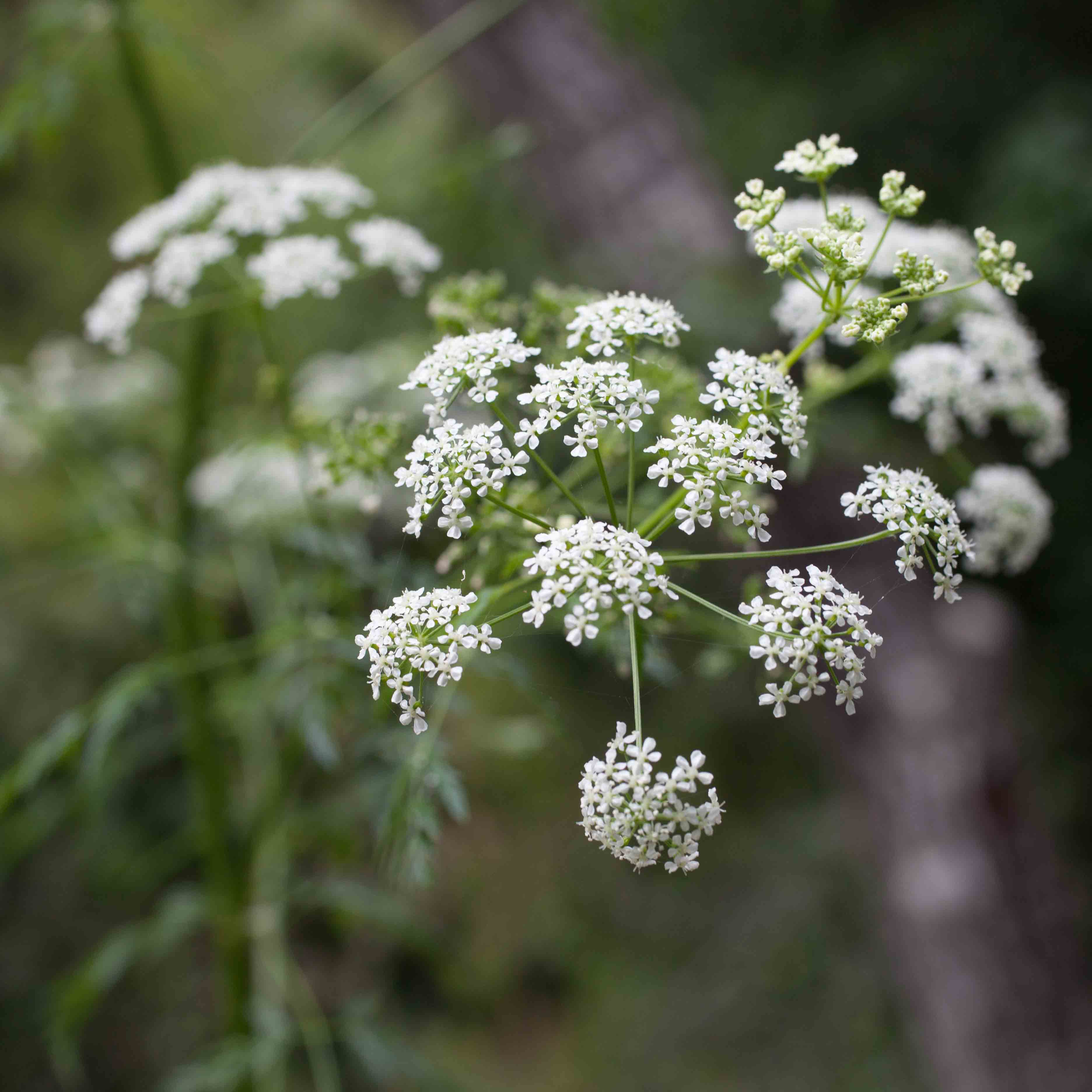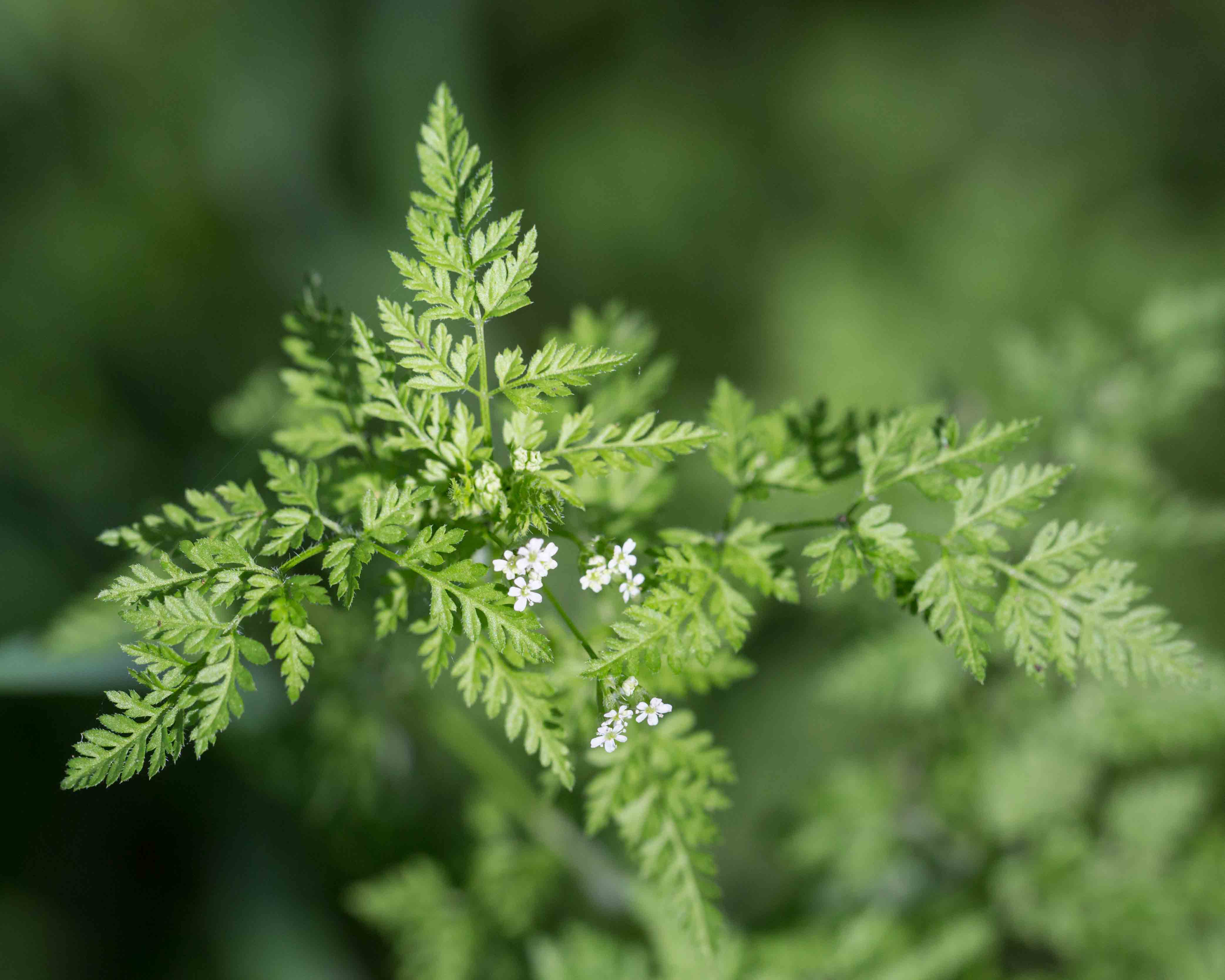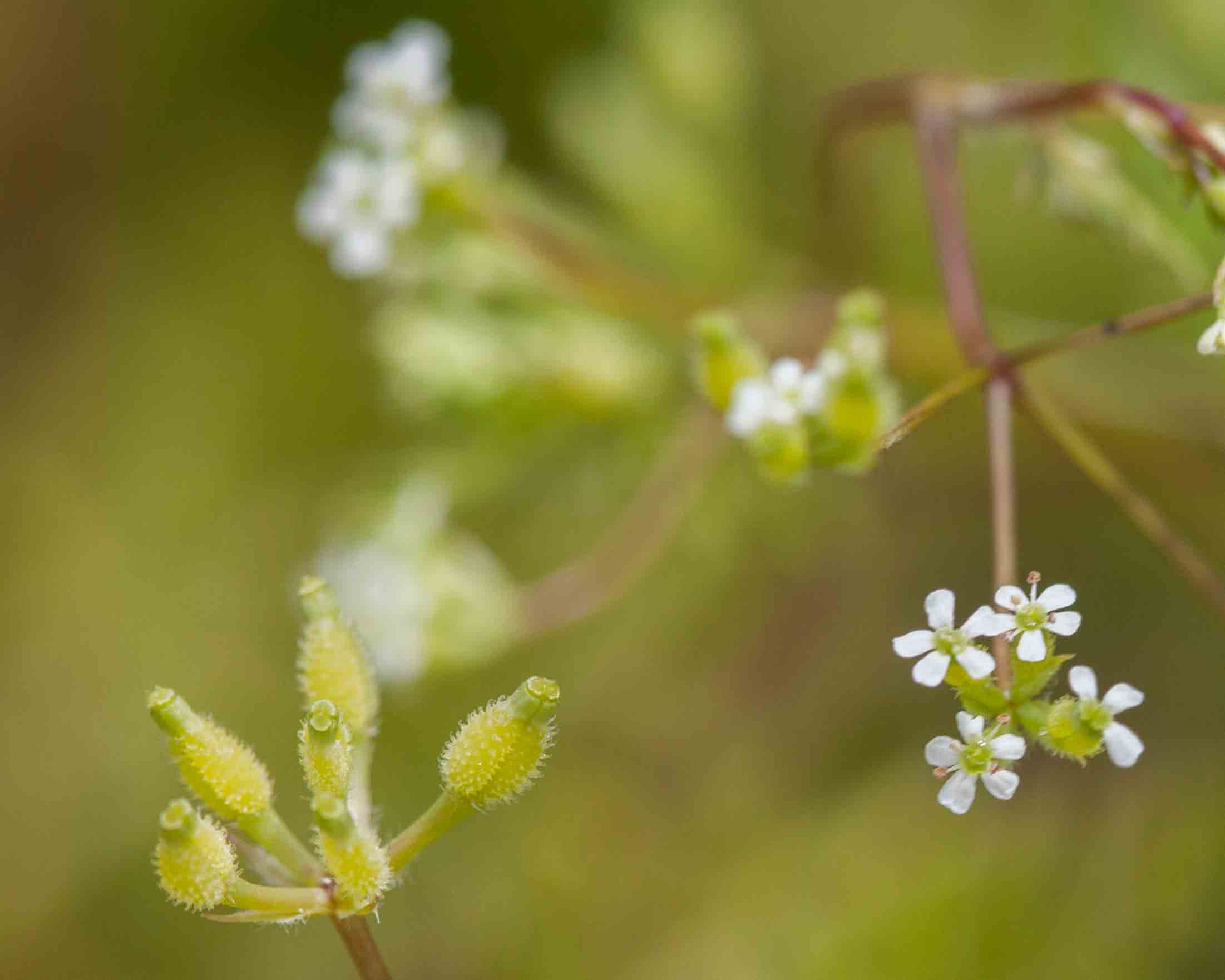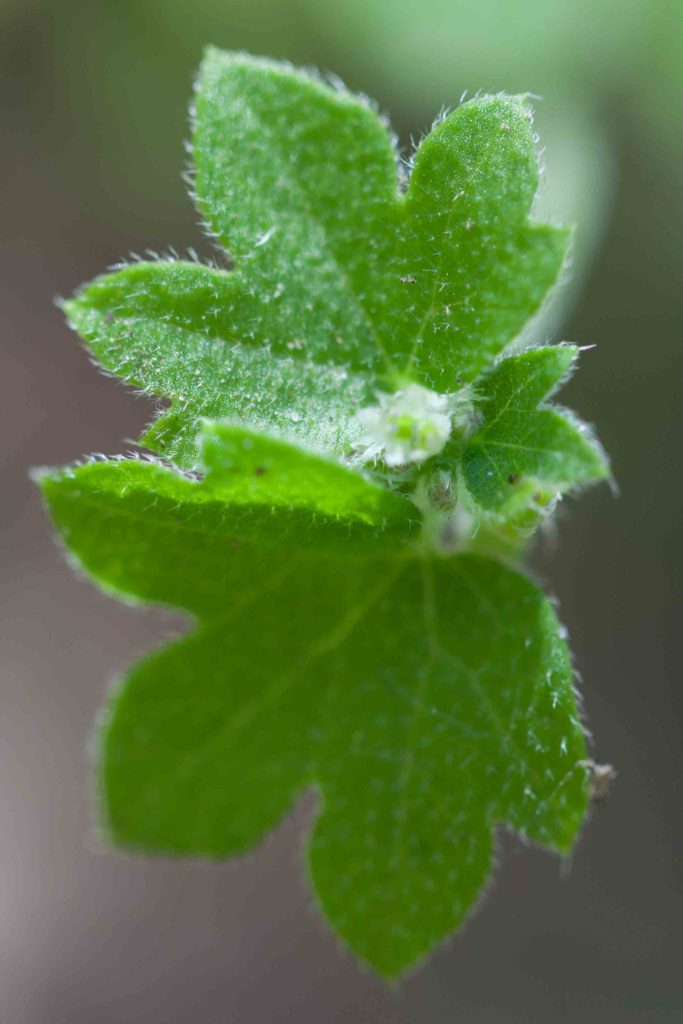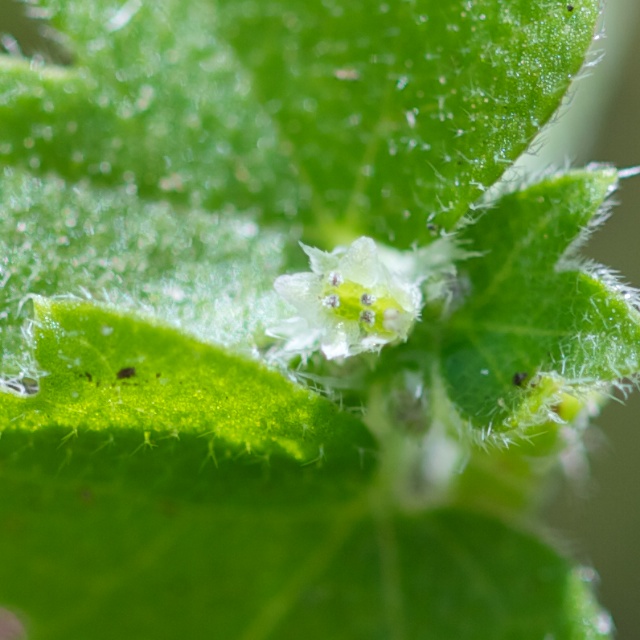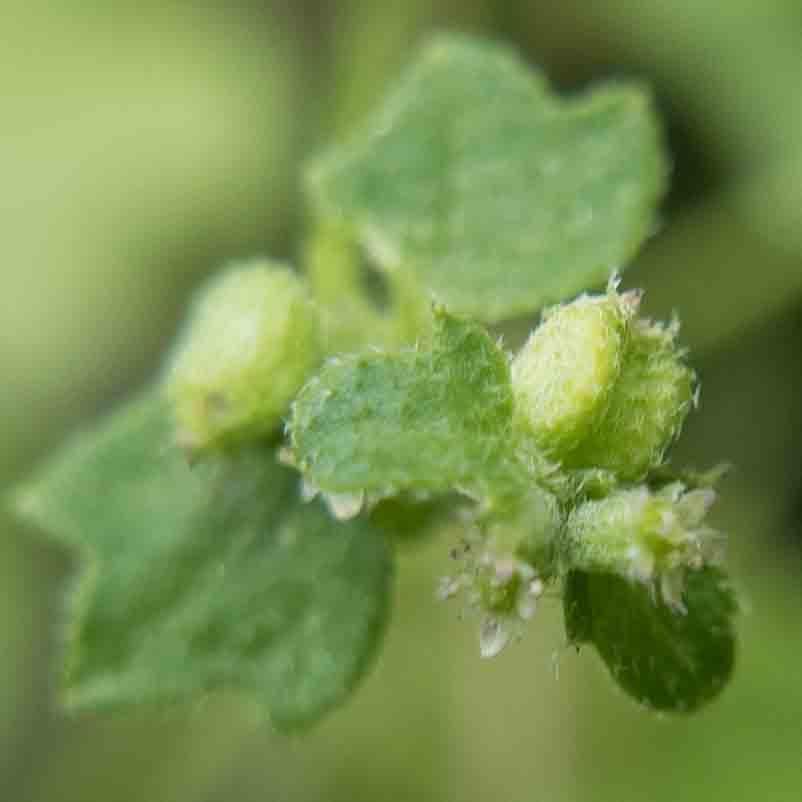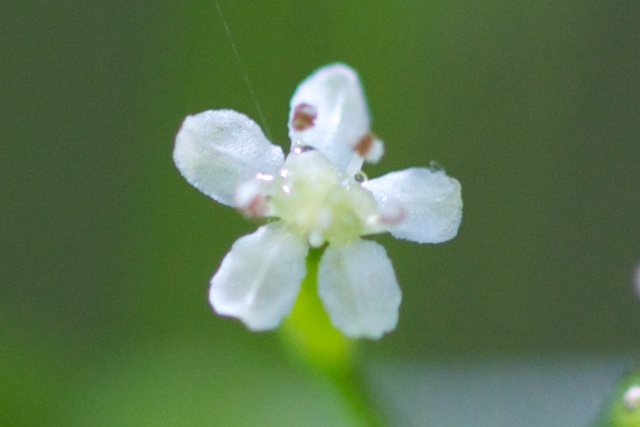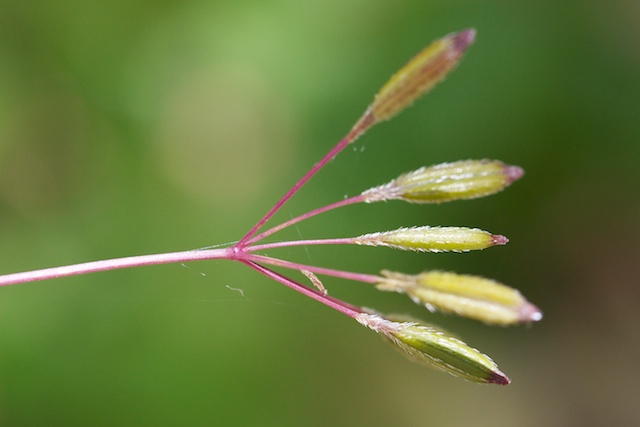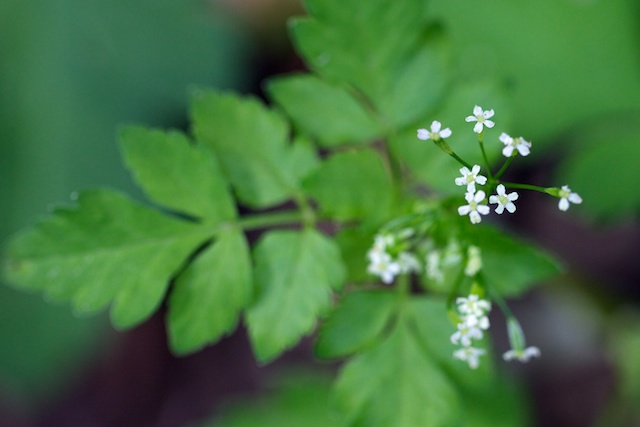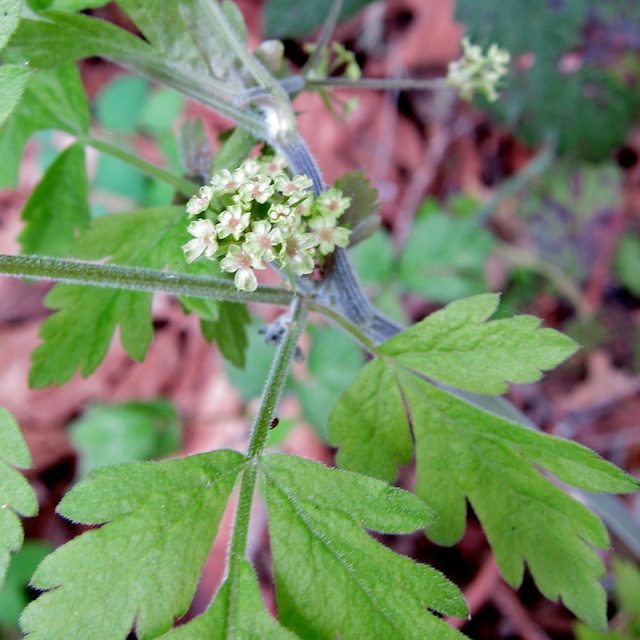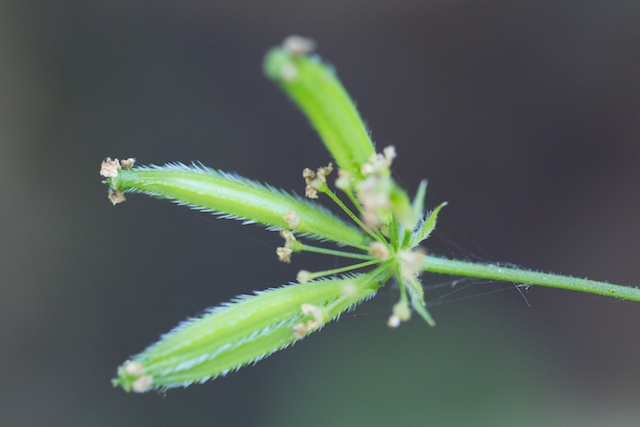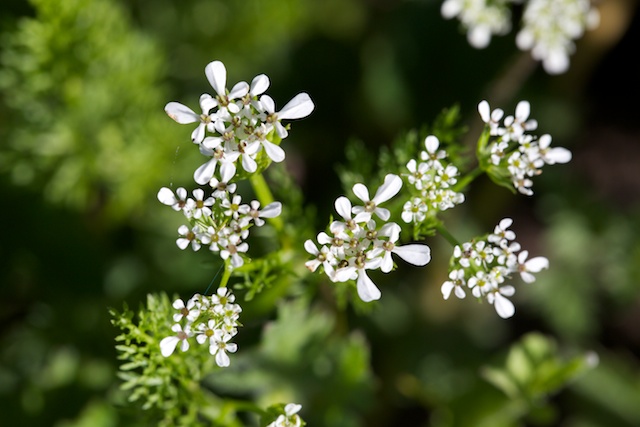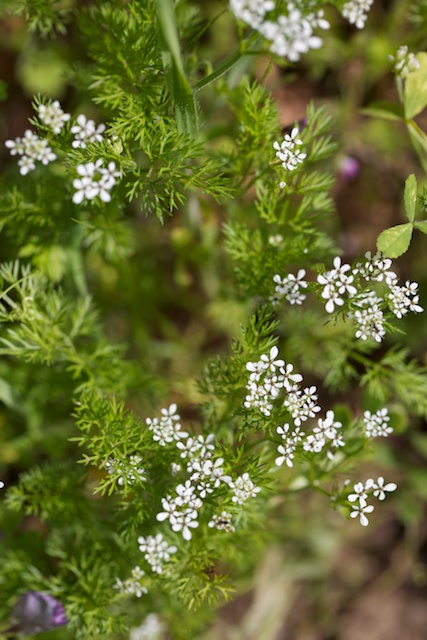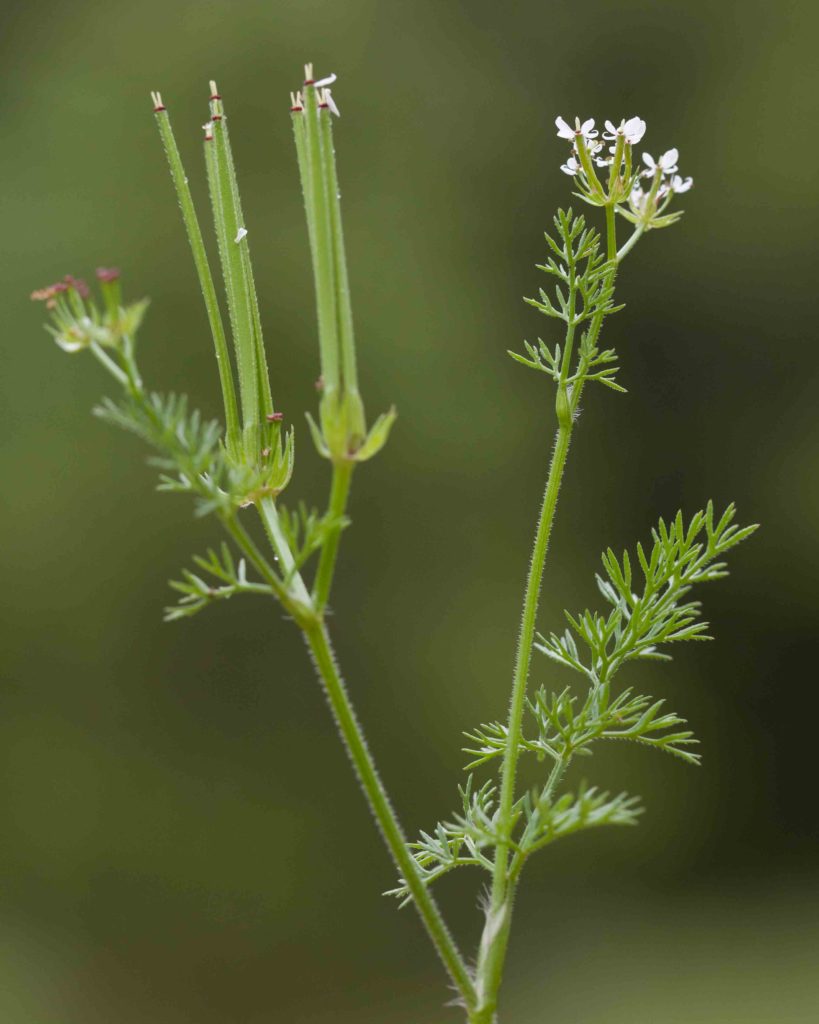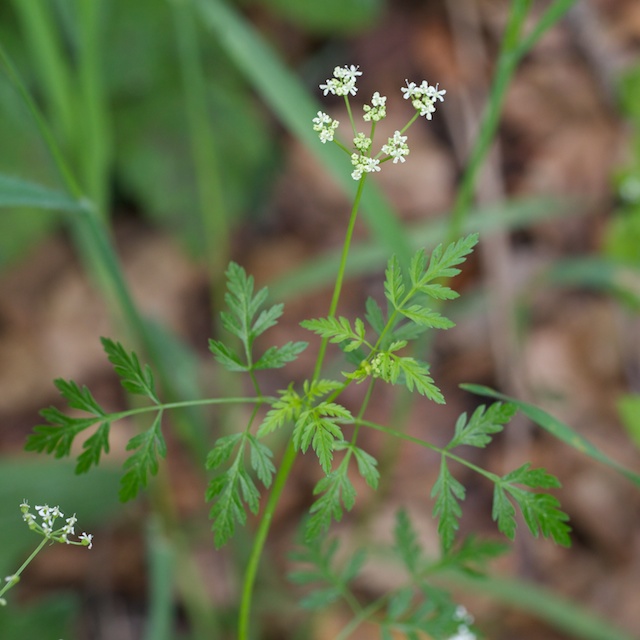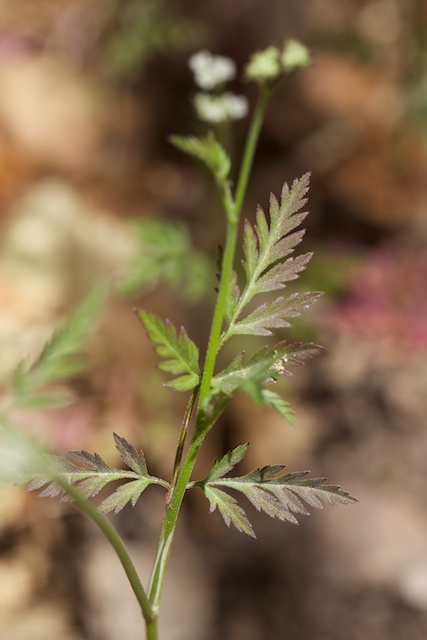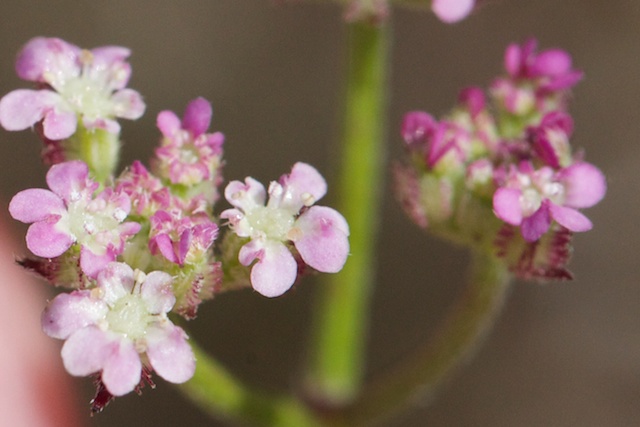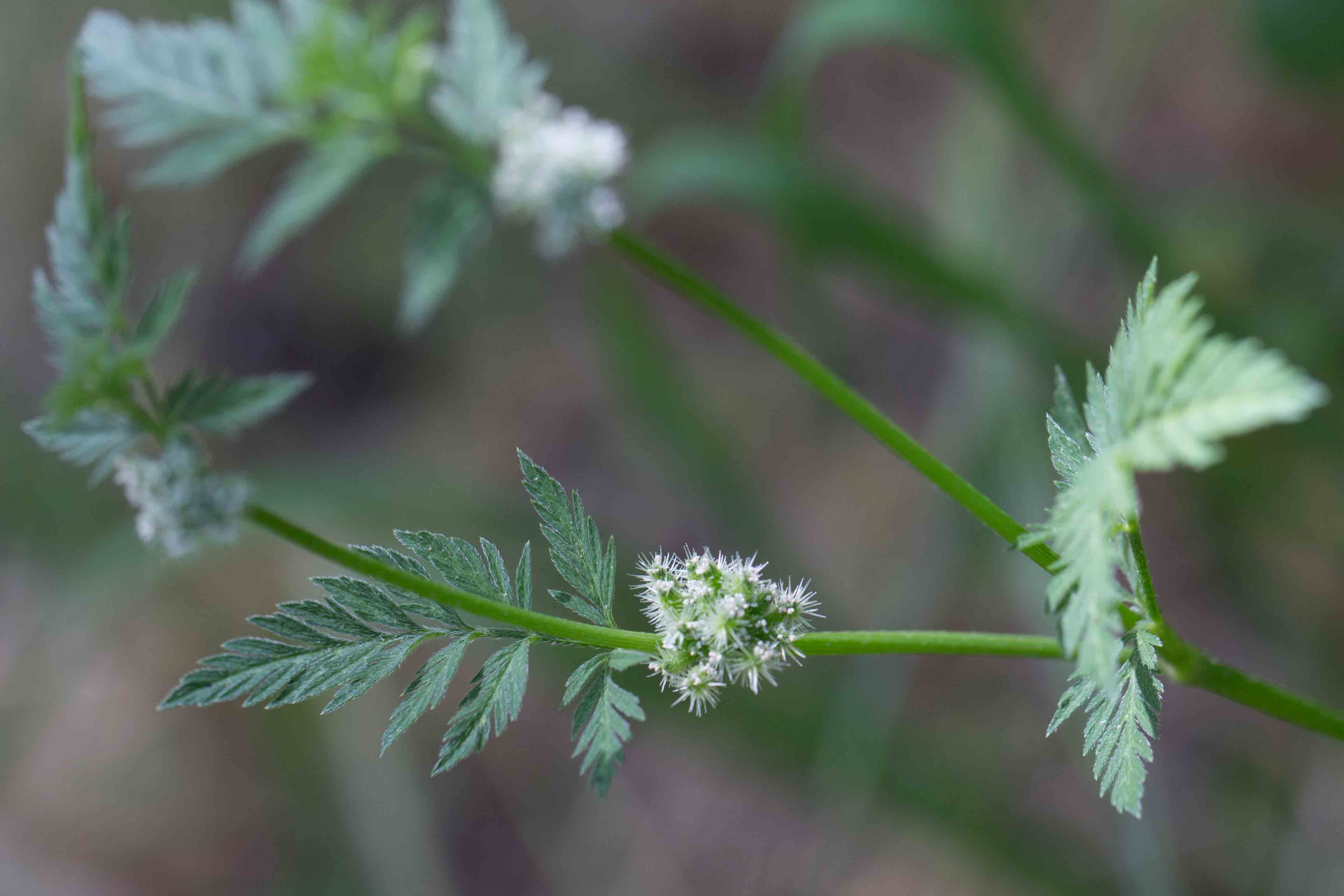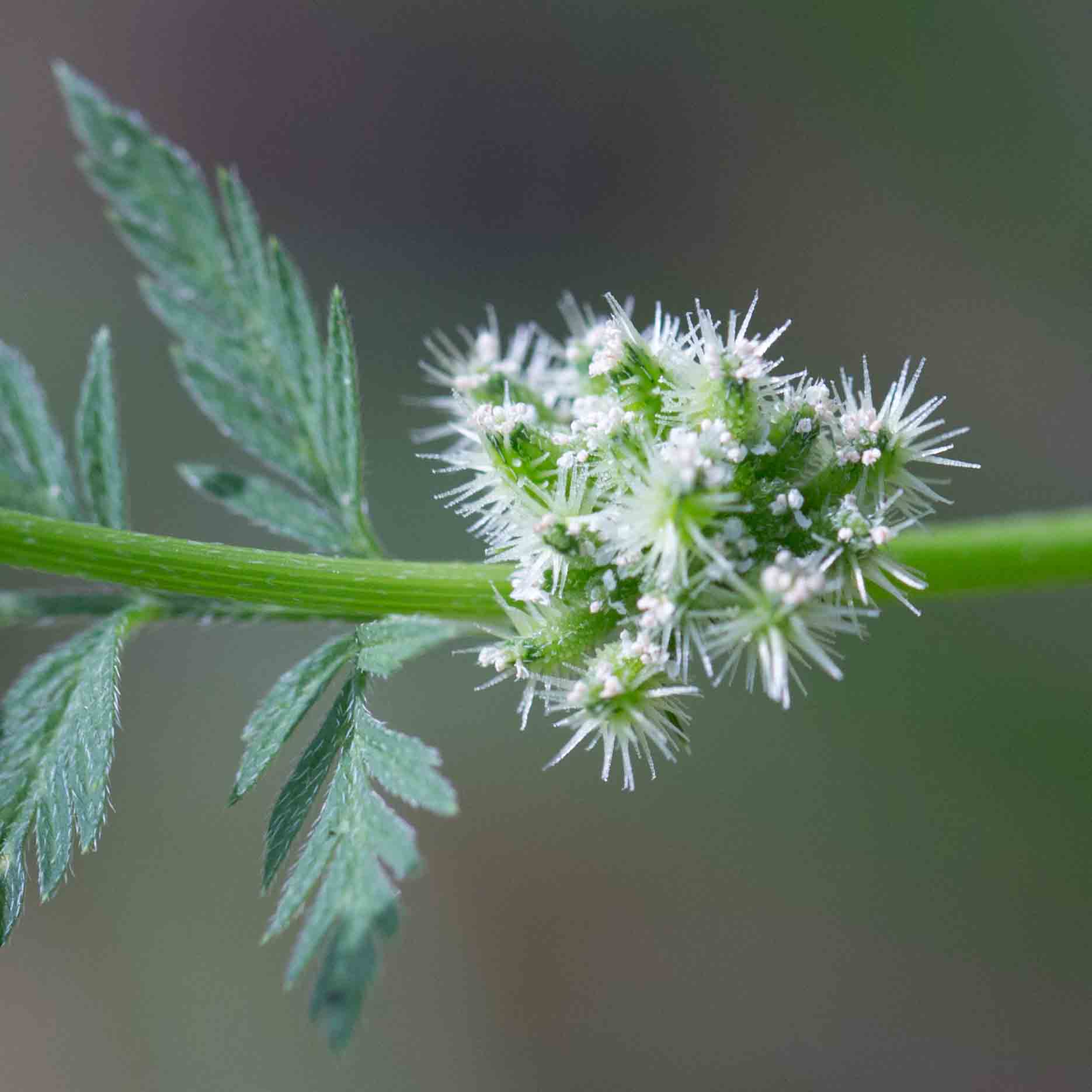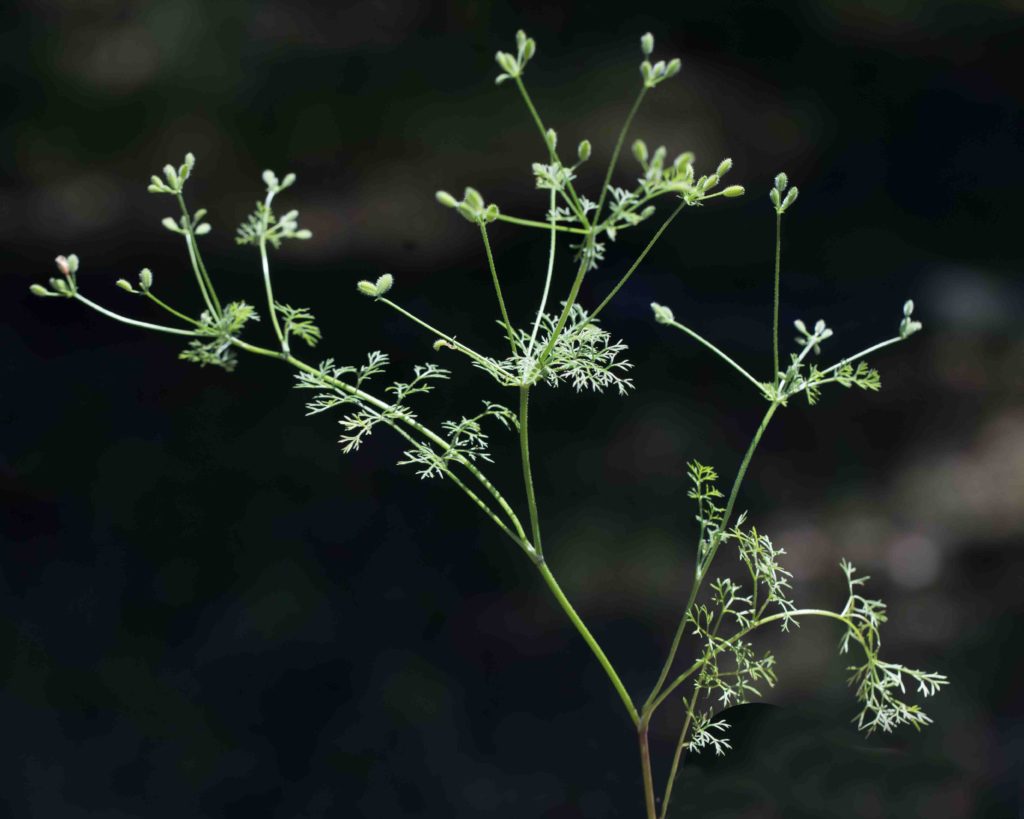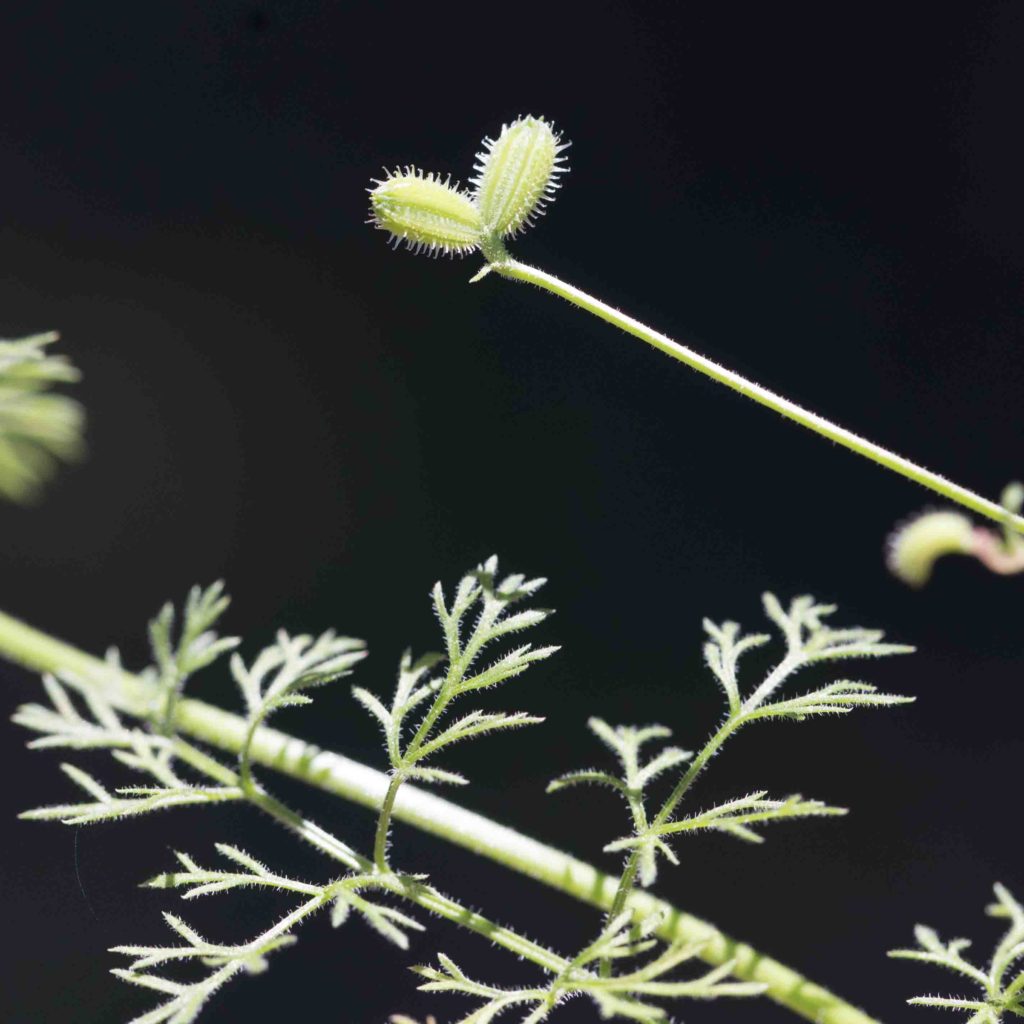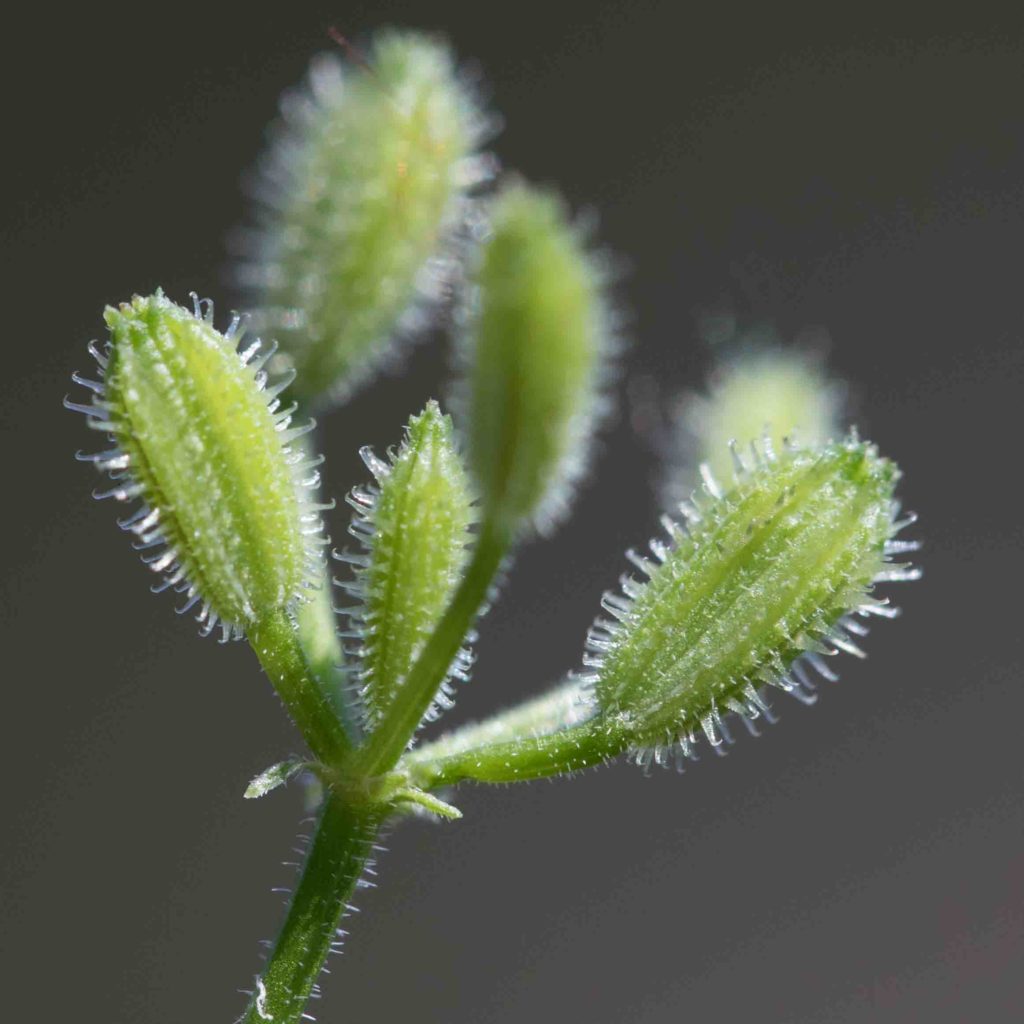Apiaceae: Carrot Family – Woodland
Most members of the Apiaceae (carrot) family are characterized by having their flowers arranged in umbels, i.e. with segments radiating from a single point. Formerly, the family was called Umbelliferae. Many have compound umbels, where an umbel contains multiple inflorescences, each of which is an umbel. Umbels may be rounded, flat-topped or concentrated in head-like structures. Most members of the family have white flowers. Notable exceptions are Fennel, Lomatiums, most Sancicles and Tauschia, which have yellow flowers. This page shows plants found under or near trees. Many of the leaves look similar, so look closely for differences in the fruits.
Bur-chervil – Anthriscus caucalis
Blooms:
Apr–June
Plant Height:
40–90 cm
Flower Size:
Large cluster
Origin:
Europe
Habitat:
Waste & disturbed places
Notes:
Can be mistaken for Poison Hemlock (Conium maculatum). But this plant is smaller, its leaves are more feathery, and without the red blotches on the stems. Note the ovoid fruit which have a beak about 1/3 of the body length, and small hooks which give the plant its common name.
Bowlesia – Bowlesia incana
Blooms:
Mar–Apr
Plant Height:
5–60 cm
Flower Size:
Very small
Origin:
Native
Habitat:
Shaded slopes
Notes:
This small, inconspicuous plant has tiny flowers. It has distinctive, slightly geranium-like leaves and weak trailing stems. Fruits are up to 2 mm across, ovoid/spheric, and inflated.
Wood / Mountain Sweet Cicely – Osmorhiza berteroi
Blooms:
Apr–July
Plant Height:
30–120 cm
Flower Size:
Small
Origin:
Native
Habitat:
Shaded woods
Notes:
Very common shade-loving plant, which produces a loose umbel of tiny white flowers. Note that there are no bractlets at the base of the flowers/fruits and that the fruits each have a long pedicel.
California Sweet Cicely – Osmorhiza brachypoda
Blooms:
Mar–May
Plant Height:
30–80 cm
Flower Size:
Small
Origin:
Native
Habitat:
Shaded woods
Notes:
Less common than Wood Sweet Cicely (Osmorhiza berteroi, see above). The flowers are greenish-yellow, and subtended by noticeable bracts, which remain when the fruits develop. Note that the pedicels of the fruits are very shor,t and that the fruits themselves are shorter and fatter than those of Wood Sweet Cicely.
Shepherd’s Needle – Scandix pecten-veneris
Blooms:
Apr–June
Plant Height:
15–50 cm
Flower Size:
Small cluster
Origin:
Mediterranean
Habitat:
Grassland & disturbed places
Notes:
This plant has distinctive leaves, which are finely-dissected similar to parsley. Note the asymmetrical flowers, with a longer outward-facing petal, and the long fruits which give the plant its common name.
Field Hedge-parsley – Torilis arvensis
Blooms:
Apr–July
Plant Height:
30-100 cm
Flower Size:
Small cluster
Origin:
Europe
Invasive?
Yes – moderate
Habitat:
Woodland, disturbed places
Notes:
Easily confused with Bur Chervil (Anthriscus caucalis, see above). This plant’s leaves tend to be narrower, the inflorescence is smaller, the flowers can sometimes be pinkish, and the hairs on the fruits are noticeably longer on one side of the fruit. Sometimes known — for good reason — as Tall Sock Destroyer.
Knotted Hedge-parsley – Torilis nodosa
Blooms:
Apr–June
Plant Height:
10–70 cm
Flower Size:
Small cluster
Origin:
Europe
Habitat:
Open woodland
Notes:
The plant is similar in appearance to Field Hedge-parsley (Torilis arvensis, see above). However, its inflorescence appears in sessile clusters in the nodes of the stems, and the fruits are bristly on only one side, the other side being smooth or pimply. Sometimes known as “Short Sock Destroyer”.
California Hedge-parsley – Yabea microcarpa
Blooms:
Apr–June
Plant Height:
3–40 cm
Flower Size:
Very small
Origin:
Native
Habitat:
Open or shaded slopes
Notes:
This is less common than the two non-native Hedge-parsleys (Torilis sp. see above), and easily overlooked. It has distinctive leaves: thread-like to linear, and pinnately dissected. Also note the oblong fruits, slightly flattened front to back, with hooks similar to those of the non-native Hedge-parsleys.
